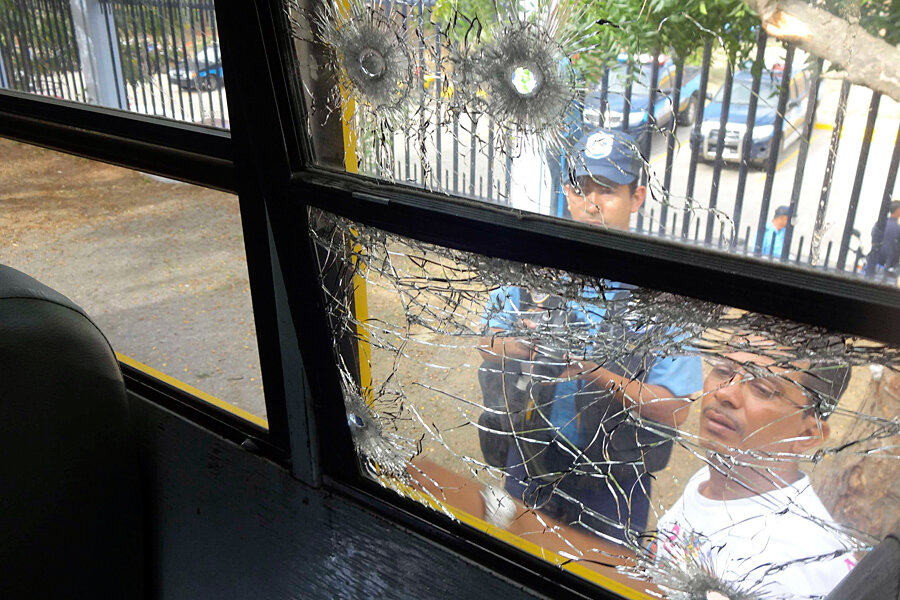Anniversary celebration of Nicaragua's Sandinista revolution marred by violence
Loading...
• A version of this story ran on the author's site, nicaraguadispatch.com. The views expressed are the author's own.
The 35th anniversary of Nicaragua's Sandinista revolution ended in bloodshed early Sunday morning when buses carrying party supporters back home to Matagalpa and Estelí were ambushed in what appears to be coordinated attacks that killed 5 people and injured more than two dozen, according to preliminary reports from state media.
Sandinista authorities say buses bringing party supporters home from the 35/19 anniversary celebration in Managua were ambushed around midnight on KM 60 of the Inter-American Highway, in the community of Las Calabazas, Matagalpa. The armed men opened fire on the bus, killing four people and injuring 24.
There was reportedly a second similar attack that occurred around the same time in San Ramon, Matagalpa, where another bus was ambushed, claiming the life of a 19-year-old passenger, according to Sandinista Mayor Sadrach Zeledón.
The victims of the attacks were from the rural communities of San Ramon, Matagalapa, and San Juan de Limay, Estelí.
Sandinista authorities are calling the attacks a “cowardly massacre.”
“This was practically an act of terrorism,” Estelí Mayor Francisco Valenzuela told Sandinista media. “We demand justice.”
No group has yet claimed responsibility for the attack. And Sandinista authorities are being careful not to blame the attack on rearmed contras, whose existence the government denies.
US-backed counterrevolutionary forces, or “contras,” battled the left-wing Sandinista government in the decade-long civil war in the 1980s, which claimed more than 36,000 lives. When President Daniel Ortega and the Sandinistas were voted out of office in 1990, tens of thousands of contras handed in their weapons and tried to return to civilian life.
President Ortega returned to power in 2007 in his fourth attempt at reelection – a campaign he ran on promises of “peace and reconciliation.” But critics claim he's pushing the country back toward dictatorship.
On Saturday morning a bus full of Sandinista supporters heading from Ocotal to Managua to celebrate the anniversary of the revolution were stopped on the highway at 6:30 a.m. by a group of self-proclaimed rearmed contras who threatened the passengers and then tagged the bus with FDN-380, the mark of the contra.
The Nicaragua Dispatch reached out to the alleged leader of FDN-380 for comment, but did not immediately hear back from him.
Ortega has not yet commented on the deadly attacks in Matagalpa.
– A version of this blog ran on the author's website, www.nicaraguadispatch.com







